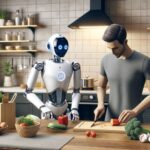Over the next decade and a half, NASA, China, and SpaceX plan to send astronauts to Mars, a journey that requires overcoming significant challenges due to the vast distance involved. The closest approach between Earth and Mars still places the red planet at least 55 million kilometers away, a journey that with current technology, could take six to nine months each way, leading to a total mission duration of around three years.
Exploring Advanced Propulsion and Hibernation
To mitigate the effects of long-term microgravity and radiation exposure, NASA is exploring new propulsion systems to shorten travel times and hibernation technology to allow astronauts to sleep through most of the journey. The NASA Innovative Advanced Concepts (NIAC) program recently selected an experiment called Studying Torpor in Animals for Space-health in Humans (STASH) for development, which aims to induce a state of torpor similar to that of hibernating mammals.
Addressing Space Travel Health Risks
Research has demonstrated that prolonged exposure to microgravity, as observed on the International Space Station (ISS), leads to muscle and bone deterioration, organ and cardiovascular issues, and neurological effects. Resupply challenges and the psychological impact of confinement in a small space are additional concerns. To combat these issues, agencies consider inducing hibernation in crews during space voyages, which could help astronauts arrive on Mars in better health for surface operations.
The STASH experiment, a collaboration with BioServe Space Technologies at the University of Colorado Boulder, will feature a hibernation laboratory aboard the ISS. It will maintain temperatures as low as 4°C to induce torpor in rodents, while monitoring their metabolic rates, body temperatures, and heart rates in real time. The research aims to investigate the protective effects of hibernation against muscle and bone loss and to test synthetic torpor induction methods.
The ultimate objective is to develop hibernation technology for deep space missions. The researchers believe that synthetic torpor could mitigate or eliminate the hazards of space travel identified by NASA’s RIDGE acronym: Space Radiation, Isolation and Confinement, Distance from Earth, Gravity Fields, and Hostile/Closed Environments. However, infrastructure to study hibernation in space is currently lacking, and STASH is set to pioneer this essential research.










